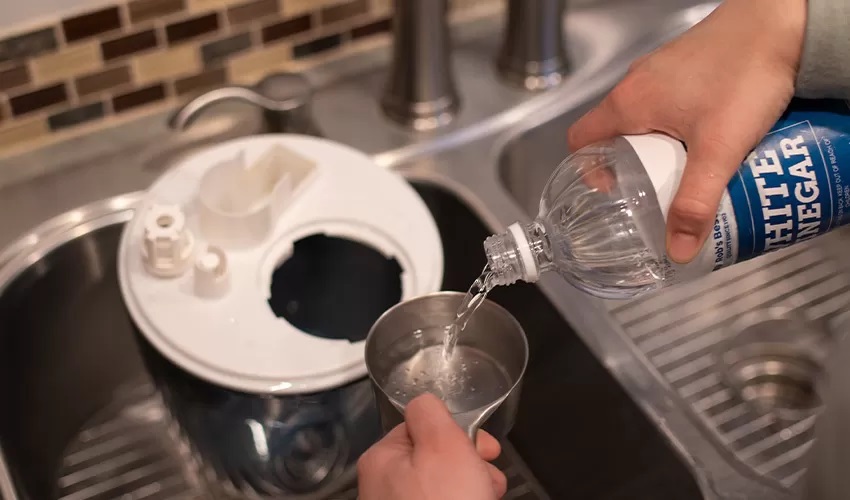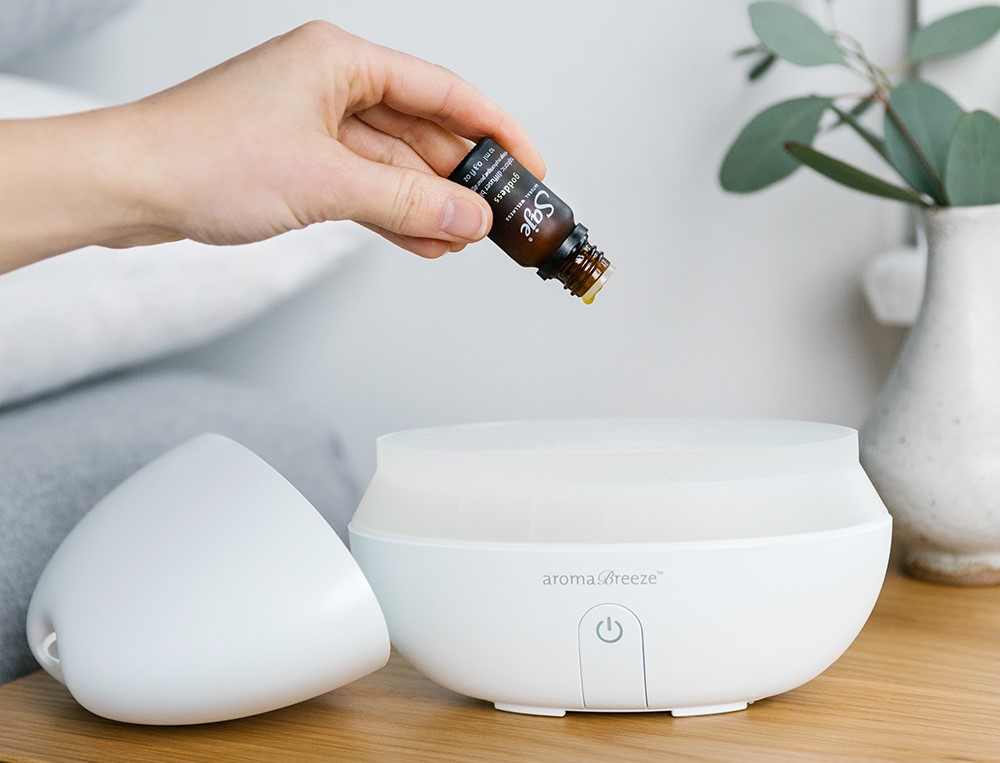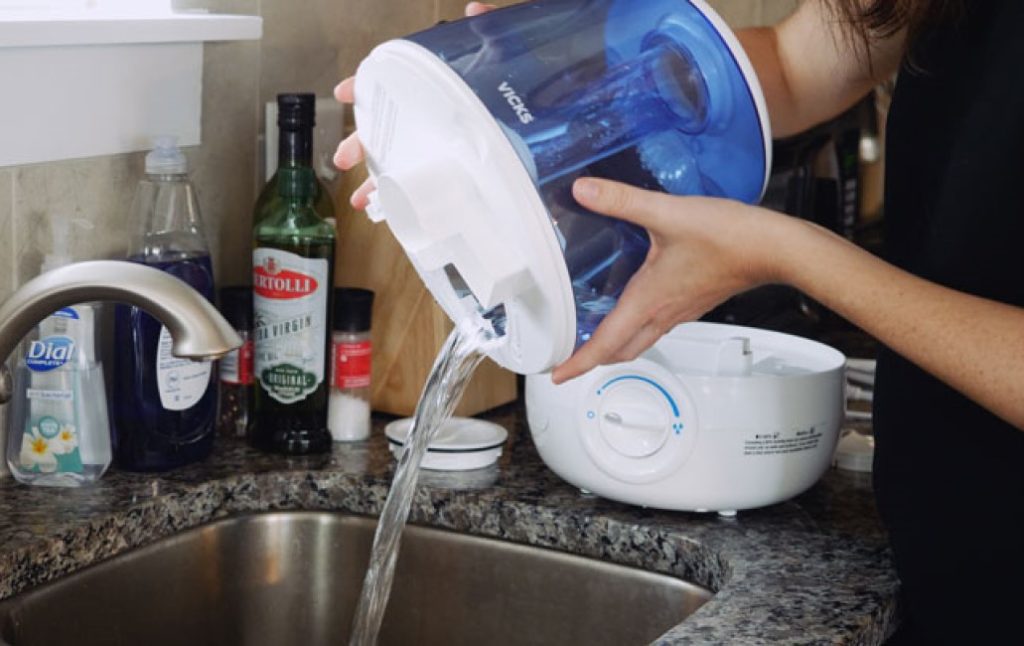

Every homeowner desires to have just the right amount of humidity in their homes.
While setting up their homes, people often ask: What should the humidity be in a house? This question extends beyond the normal understanding of a perfect home.
Having the best humidity level in homes, as can be attested by homeowners, is based on individual preferences. Therefore, you will find that different people have their preferences and set their desired levels of humidity. And that’s where humidifiers and whole-house dehumidifiers come into play.
Setting a comfortable humidity level will ensure your home sets the right tone when starting your day as home comfort should be the number one priority.
In this guide, we will look at everything about home humidity levels.
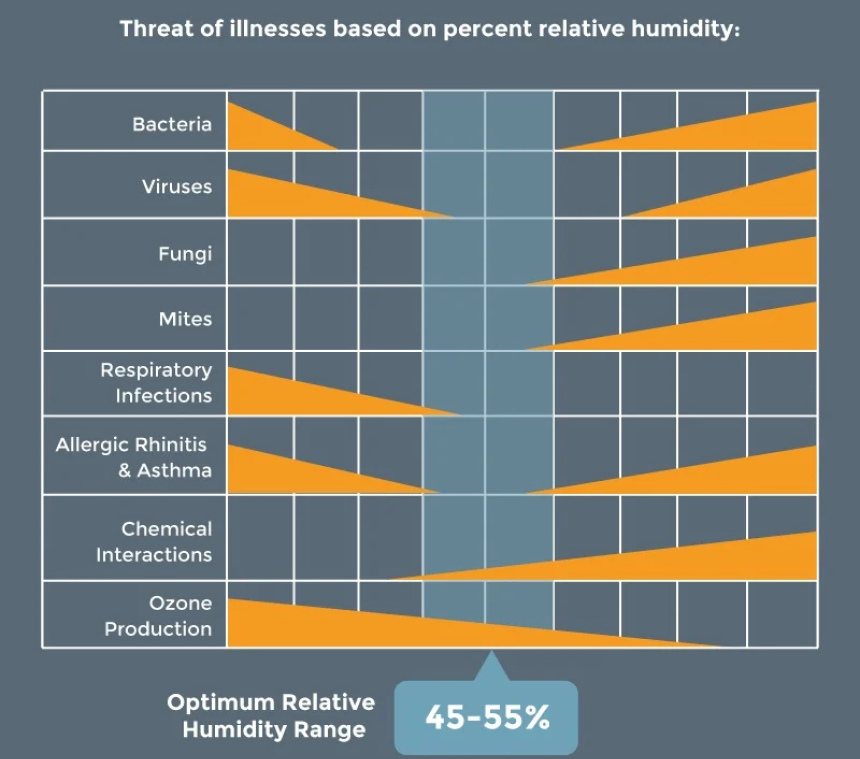
Apart from physical comfort, the right humidity levels have numerous health benefits. It clears sinuses, in the process improving breathing.
Also, the optimal humidity level protects us from a wide variety of infection problems. It is vital to consider the fact that viruses and bacteria have no survival chances in moist air.
Well, the Everlasting Comfort Cool Mist Humidifier with an essential oil tray and 6-liter capacity is a perfect fit for homeowners when it comes to preventing colds. The product is also quite suitable for fighting asthma and insomnia; it lasts six hours of sleep between its refills.
Additionally, setting the right humidity levels in homes improves the quality of sleep and nurtures glowing skin. You’ll prevent your skin from drying up and becoming dull.
With the right set of humidity, you’ll protect yourself from throat dryness and snoring. You can also expect to sleep peacefully at night with the right apparatus to control humidity in your home.

As much as high humidity helps with breathing, its health risks are far worse and can wreak havoc in homes.
First of all, you risk having lots of water droplets all over your home. This can irate your family members or guests.
Let’s look at the repercussions of having high indoor humidity.
Well, molds and bacteria thrive in highly humid homes. The sight of mildew around the walls and corners can be traumatizing.
Fungi will be everywhere, and they can replicate fast if you don’t control the humidity.
Also, several homeowners have reported health problems that directly relate to high humidity. A significant cause of ailments like
asthma and allergies
Trusted Source
How Much Humidification Is Too Much? - Achoo! Blog
Besides making sure that the moisture from your humidifier is pure and clean, it’s also important to maintain a proper level of humidity in your home. While dry air is definitely uncomfortable and can lead to discomfort, too much moisture in the air leads to another set of problems: mold and dust mites thrive in overly moist environments, so improperly maintained levels of humidity could cause further irritation to allergy and asthma sufferers.
To keep your home environment comfortably humid without encouraging dust mite and mold growth, experts recommend indoor humidity levels between 40% and 50% for allergy sufferers.
www.achooallergy.com
is the bacteria found in the humid corners of their homes.
High indoor humidity also damages paintwork and destroys wallpapers. Condensation primarily occurs along the walls of homes. If you don’t control your humidity level and it goes higher than recommended amounts, you risk damaging your fresh paintings, and wallpapers.
Reason?
Exterior surfaces are usually warm and somewhat attract humid air. So, stay vigilant for flaky paint curling wallpapers. Should you spot it, then beware that your home is reacting to the high indoor humidity.
Notably, high humidity also damages walls. As much as walls in homes may have air and vapor barriers, the high humidity works against them. During the summer, when the air is warmer, moisture condenses on the crawl spaces and foundation materials, leading to problems in building structures. Additionally, changing moisture content makes things swell. Consequently, cracks form.
Experts add that muggy conditions and sleep discomfort is common in homes with high indoor humidity. Setting the best humidity level for sleeping is very important for your physical and mental well-being.
High humidity blocks the airway paths and results in poor breathing, disrupting sleep. Consider reducing your indoor humidity to the correct levels when having trouble sleeping.

Notably, low humidity poses significant challenges in homes and results in higher spending to establish improved homes.
With low humid conditions, germs and viruses will thrive. But if you keep track of humidity levels after judging the external humidity level, you’ll fight against the diseases caused by these germs and viruses.
Furthermore, low indoor humidity increases individuals’ chances of contracting colds and respiratory illnesses.
It blocks the respiratory system and inhibits proper breathing; individuals with past histories of respiratory illnesses suffer most when exposed to lowly-humid conditions.
Low home humidity also results in itchy skin and hair, a contributing factor being the dryness that comes along with low moisture.
You should also beware that low indoor humidity causes static electricity and damage to electronics. A dry environment is usually more likely to attract fire than a wet environment.
Indoor air dries up when the humidity levels are substantially low outside. Therefore, static electricity creeps quickly in homes with low humidity, and at times electric surges occur. You may not know it, but there is a high probability that your electronics are getting damaged by the low humidity. And if you invest in a good humidifier/dehumidifier to keep the conditions standard, you’ll limit your expenses in replacing electronics every now and then.
Surprisingly, wood furniture and floors are also at risk of being damaged in homes with low humidity. The basement is particularly prone to low humidity levels. Therefore, setting the basement’s best humidity level will ensure the furniture and floors are safe from splits and cracks.
Overall, you should rectify the low humidity level in your home to mitigate its effects in homes.
The best humidity level in a house or any indoor space is generally considered to be between 60% and 75% during summer and 55-70% during winter. But different individuals have a wide range of preferences for the relative humidity for their homes.
However, as much as preferences vary, individuals must always stick to the right temperatures and maintain relative humidity in their homes to have the right balance in life.
A well-recommended dehumidifier from Homelabs is useful in setting your home to the right humidity temperatures. It has a removable water tank capacity of 1.6 gallons, drain hose outlet, auto restart, and shut off, and can operate in turbo mode.
Overall, your home is your serenity. Understand what the relative humidity should be in a house to make living in it worthwhile.
There are several ways to measure the humidity level in a room.
The best method is to use a hygrometer. This device serves as a thermometer and measures the temperature level in a room in the same way that a thermometer measures body temperature.
We have already reviewed the best hygrometers and recommend to homeowners the ThermoPro TP49. This is a quality hygrometer that guarantees the best results. It is highly accurate, features a fast update and comes with a compact display to enhance measurement.
The ice cube method is another way of measuring indoor humidity levels. The process involves filling a glass with water, placing two ice cubes, and waiting for four minutes.
Check on the glass after four minutes. If it has condensation forming on the outside, the humidity level is high. If there is no condensation, the humidity level is low.
The last method involves inspecting wet and dry bulb thermometer temperatures. Take two thermometers, leave one as it is and wrap another on moist cotton. Place both thermometers on cardboard and after about six minutes, check their temperatures.
Subtract values from both thermometers and compare them to a relative humidity chart.

In the summer, outside weather is usually warmer, so we recommend setting low indoor humidity levels. It should be about 40-60%. This level will ensure your house members are free from health issues and prevent damages in homes.
It is also essential to know what the humidity should be in a house in the winter. Since these periods are usually colder, setting a humidity level of 30-50% would be ideal. Otherwise, be on the lookout for sudden weather changes and set your humidity in light with it.
Managing your home humidity is key to realizing the best out of your home. Homeowners must establish the most comfortable humidity level to make their houses conducive to stay in, and appealing for personal contentment.
Therefore, as a homeowner, manage your humidity level by setting the best humidity levels in the summer and winter. Again, don’t forget always to check if your humidity level aligns with your external environment for the ultimate experience.
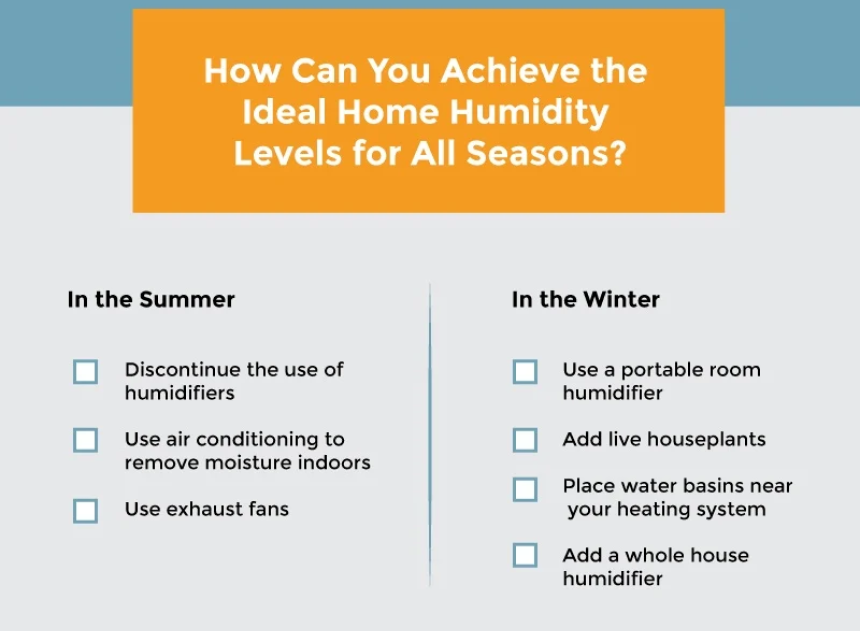 How to Increase Humidity levels
How to Increase Humidity levelsHumidifiers are useful in increasing humidity levels. They regulate home climates and are useful in bringing about the right humidity levels that nurture healthy living.
There are two types: cool mist humidifiers and warm mist humidifiers. Warm mist humidifiers serve large rooms, while cool mist humidifiers can be used in smaller rooms.
Dehumidifiers will be particularly useful here. These appliances extract water from the air to control humidity levels and eliminate odor to prevent mildew growth. They can be used in industrial areas, commercial places, and homes.
Everyone envisions the perfect home: homes free from diseases and ailments and allows us to relax.
Managing humidity levels is key to creating one. We must continuously monitor our humidity levels and make changes when necessary.
So, what should the humidity be in a house? Just enough to deliver comfort. Seasons vary, and weather patterns are dynamic. The right humidifiers and dehumidifiers set the best environments for homes in all seasons.
Therefore, homeowners must take the initiative of purchasing these products to enhance their homes. The products mentioned are effective and available in the market for you to manage and control your humidity levels to realize the best in yourself and your family.
